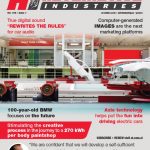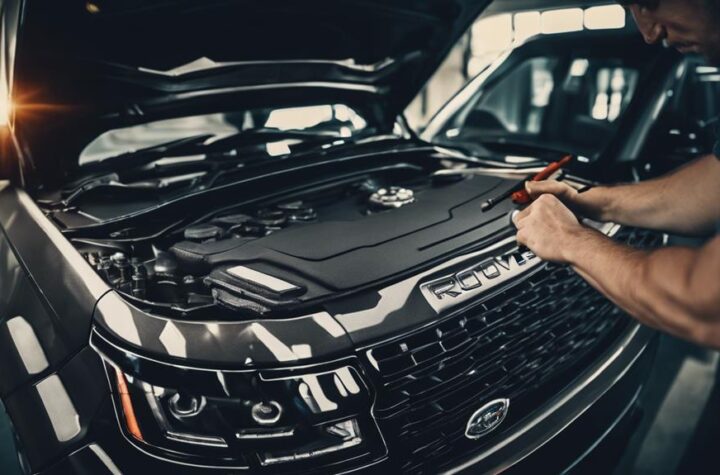Breakthroughs in the design and manufacturing of automotive glazing are helping OEMs to reduce emissions and improve passenger comfort.
A non-negotiable is that the front windscreen needs to be totally transparent – a challenge which means that the standard heating wires used in rear windows for demisting cannot be used. But, there are already vehicles on the road which have built-in heating elements which meet all safety and passenger comfort requirements.
Designed and manufactured by Saint-Gobain Sekurit, the systems are the result of ongoing research and development which is helping to reduce the thickness and therefore the weight of automotive glass while improving its performance.
Automotive Industries (AI) asked Volkmar Offerman, marketing director of Saint-Gobain Sekurit, what the focus of the company’s R&D investment is.
Offerman: Saint-Gobain Sekurit is a highly innovative company. We have launched at least one big innovation in automotive glazing annually for the past nine years. We do not invest in R&D to stay at the front of innovation research, but to develop products that assure the most comfortable and safest journey for the end-consumer. AI: Is that determined by the OEM’s expectations and drivers’ needs in terms of safety and comfort?
Offerman: Of course. The OEM requests and the needs and expectations of the market guide our developments. Our market intelligence comes from research undertaken by well-known consulting agencies which specialize in automotive trends, as well as on studies into social behavior country by country. The close relationship on daily basis with the OEMs and the mobility specialists allows us to have a good picture of the future needs in terms of safety and comfort. We also generate our own concepts. In this case each idea is carefully analyzed via a defined R&D process to ensure it will meet the market needs and expectations.
AI: How is SGS ClimaCoat different from the other glazing products?
Offerman: The big advantage of this product is the total transparency of the heating system, allowing a perfect visibility through the windshield. SGS ClimaCoat is a year-round solution with several different functions consolidated in one product. It is a windshield that is heatable at the push of a button, without impacting the passenger’s view. But SGS ClimaCoat does not only de-ice and de-fog your windshield within minutes; it also has a heat reflective function. During hot summer days this windshield blocks a big proportion of the sun’s infrared rays, which contributes to a much more comfortable cabin temperature. SGS ClimaCoat has the best thermal properties on the market. AI: How does it work?
Offerman: The basis of SGS ClimaCoat is an invisible conductive metallic coating, which is applied on the inner side of a laminated piece of glass. This coating is heatable and also acts like a “mirror” to keep infrared rays from entering the car and heating it up. Even in case of a stone impact the functions would not be affected, because of the coating’s location between the glass panels.
AI: What are the benefits to the OEMs and the passenger?
Offerman: The passenger benefits from SGS ClimaCoat all year round. In summer, SGS ClimaCoat improves the thermal comfort in the car which makes every journey more pleasant. Due to the lower cabin temperature the air conditioner (AC) provides consumption can be reduced as well. This results in AC fuel savings up to 30% and your car emits less CO2.
In winter, SGS ClimaCoat offers a transparent solution to the very unpleasant ice-scraping and de-misting of your car. At the push of a button within only few minutes your windscreen is ice-free and prevented from re-icing and re-misting. OEMs who offer SGS ClimaCoat for their car models are not only innovation leaders, but also guarantee customer satisfaction. An additional benefit of SGS ClimaCoat is the compatibleness with HUD systems. SGS ClimaCoat reduces the number of AC system vents required to control the climate inside the car, which means that OEMs can place a HUD system into the instrument panel instead. Normally, the space is taken up by AC system vents which are needed to de-fog and de-ice the windscreen. This makes integrating an HUD system quite difficult for OEMs.
AI: Can the SGS ClimaCoat be used in an electric vehicle?
Offerman: Yes, SGS ClimaCoat is also compatible with electric vehicles. Since it reduces the number of AC system vents required, SGS ClimaCoat even significant weight-reduction for the total car. This means that electric cars using SGS ClimaCoat have a longer driving range than cars with a regular AC system.
AI: Which car manufacturers are using SGS ClimaCoat at present?
Offerman: Mercedes is offering SGS ClimaCoat as an option for the B-Class E version. Moreover, Volkswagen Group is offering it for the Passat (B7 and B8), Golf (A7) and Porsche Cayenne. The latest car equipped with SGS ClimaCoat is the Audi A4.
AI: How do you see the future of this product?
Offerman: We are facing a real revolution thanks to digitalization. Customers expect their windscreens to clear as quickly as possible. Our R&D teams are working on the performance of SGS ClimaCoat in order to have an instantaneous de-icing in the coming years.
AI: What other innovations can we expect from SGS?
Offerman: Saint-Gobain Sekurit is continually pursuing innovations in the field of thin glazing. The thinner the glazing, the lighter it is, which results in benefits such as CO2 savings or an extended driving range for electric cars. We recently launched a windshield of 4mm while we are already pushing the boundaries of thin glazing even further in our R&D centers. A 3 mm windshield would allow reducing the weight by 30% compared to today’s regular windshields.
For the mid-/ long term Saint-Gobain Sekurit is working on glazing for semi- and fully autonomous cars. It will be purpose-designed for the integration of new driver assistance systems and infotainment. Another recent product is SGS ComfortSky, a laminated glass roof with a low emissivity layer. It is dark-tinted to ensure 100% UV protection, lighter than comparable glass roofs of the same size, and the low-emissive layer helps to keep the car’s interior cool in summer and warm in winter.














































 Connectivity and audio quality driving customer choices
Connectivity and audio quality driving customer choices Axle technology helps put the fun into driving electric and hybrid vehicles
Axle technology helps put the fun into driving electric and hybrid vehicles The art and science of innovation
The art and science of innovation Magna Powertrain gears up with GETRAG
Magna Powertrain gears up with GETRAG Formula E speeds up drivetrain innovation
Formula E speeds up drivetrain innovation Remote vehicle diagnostics comes of age
Remote vehicle diagnostics comes of age


